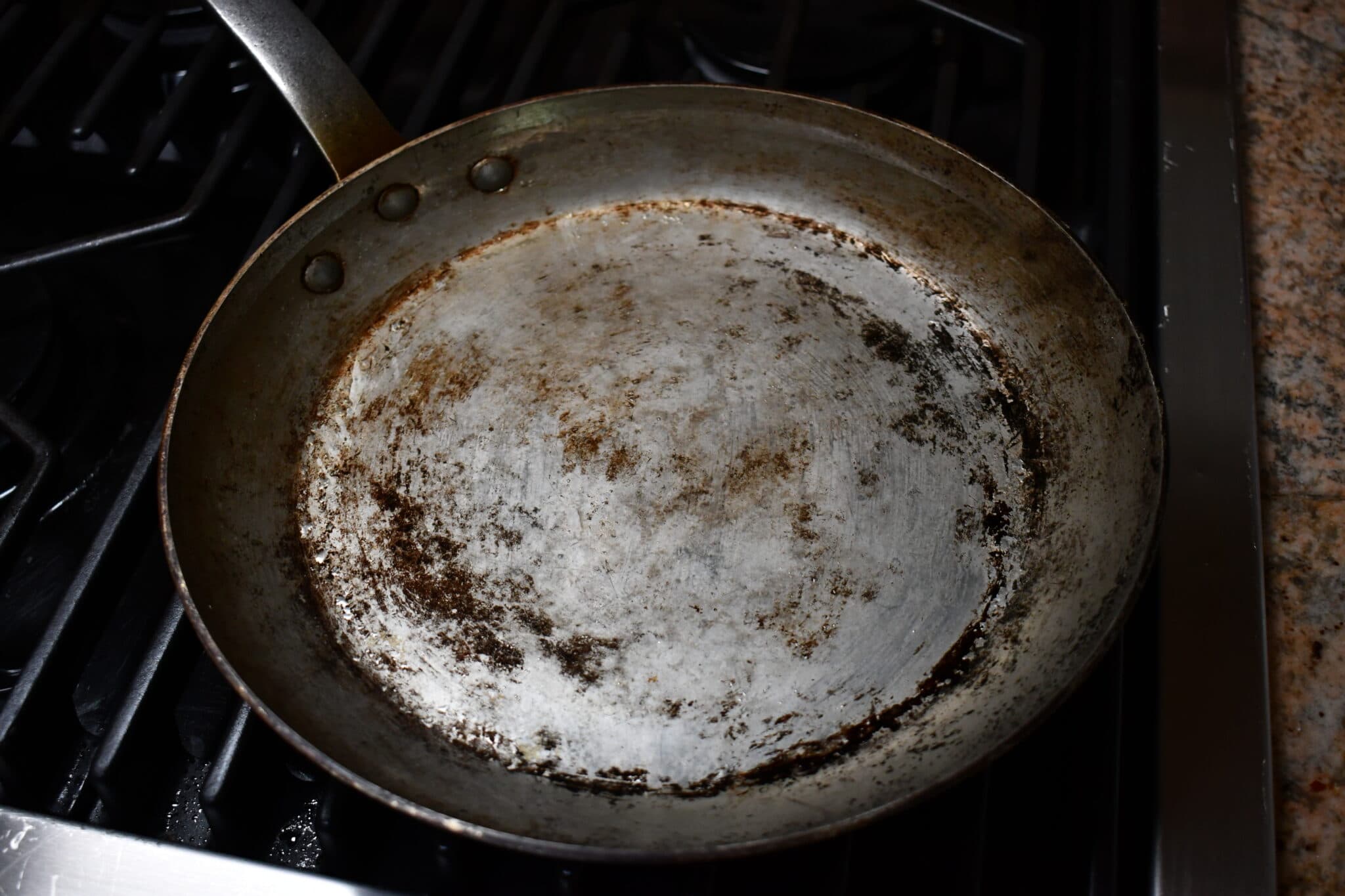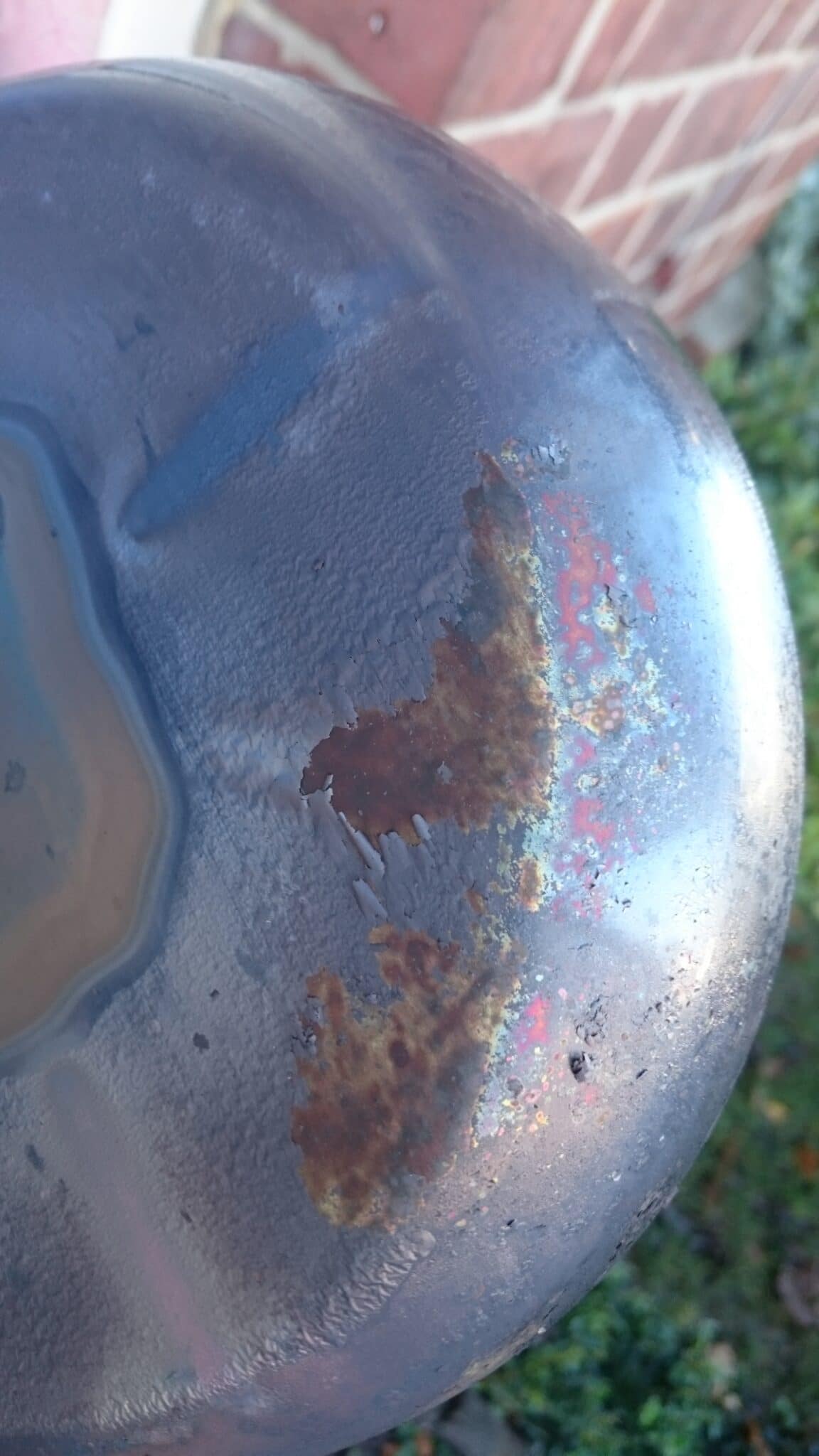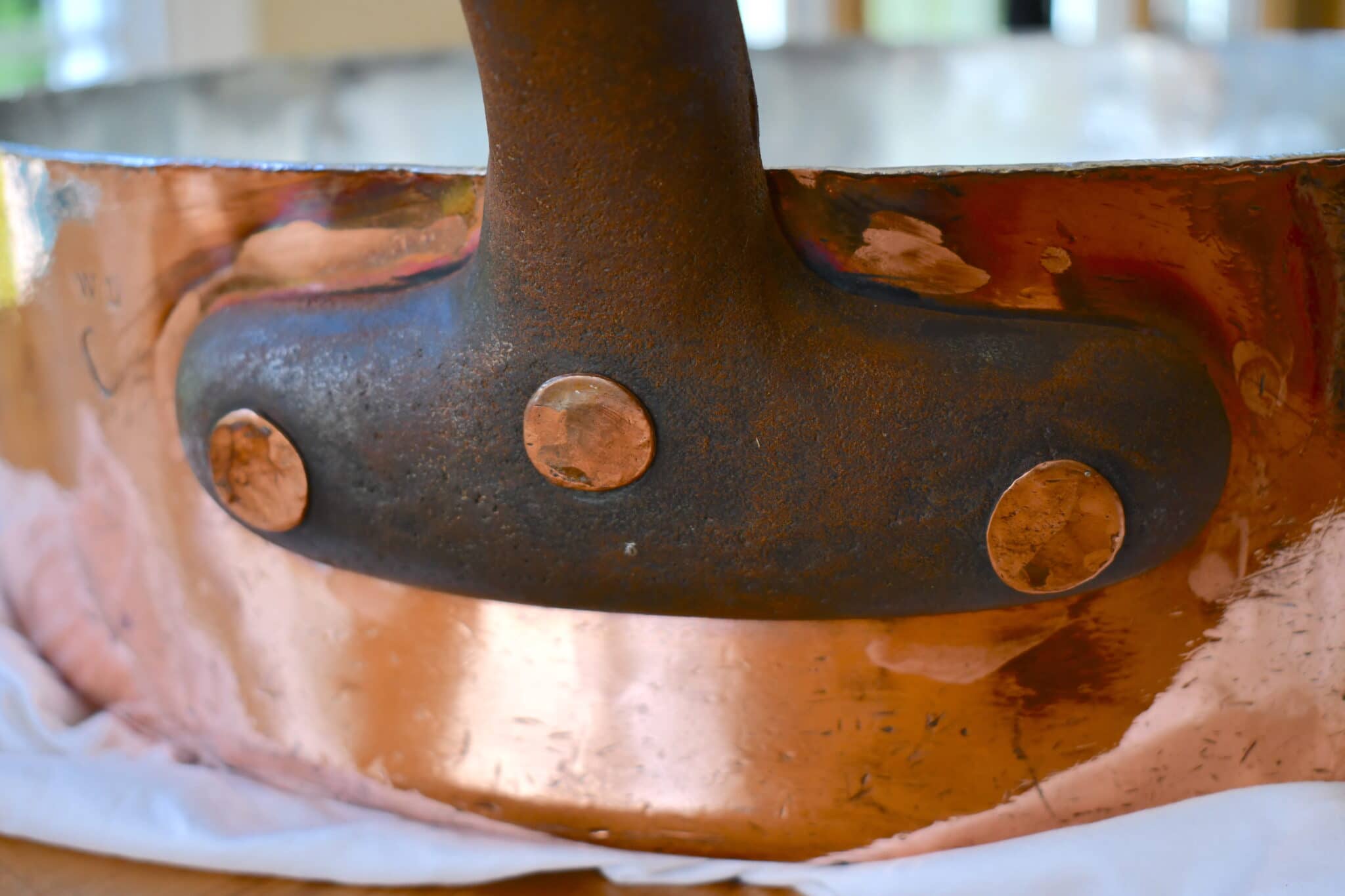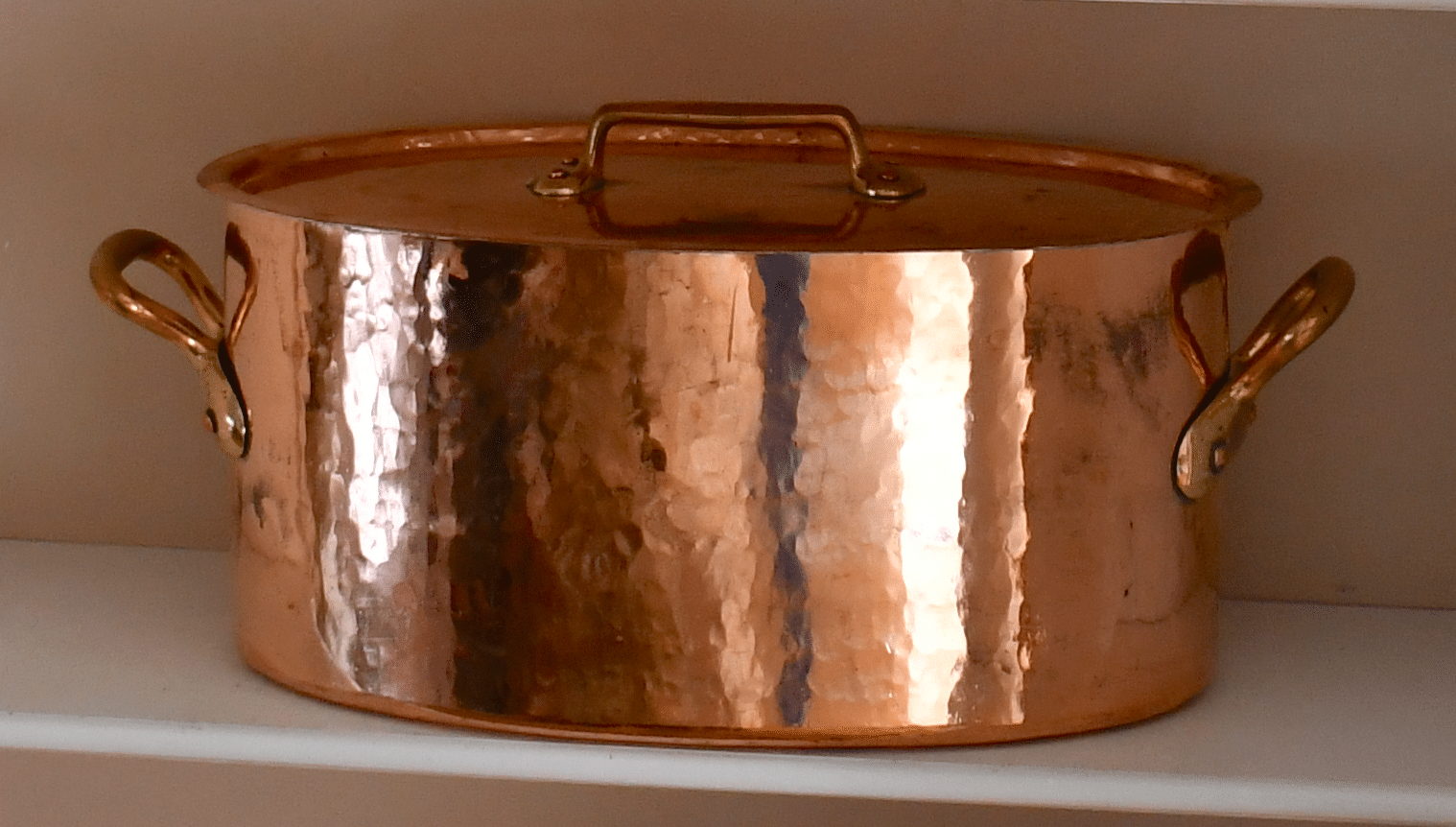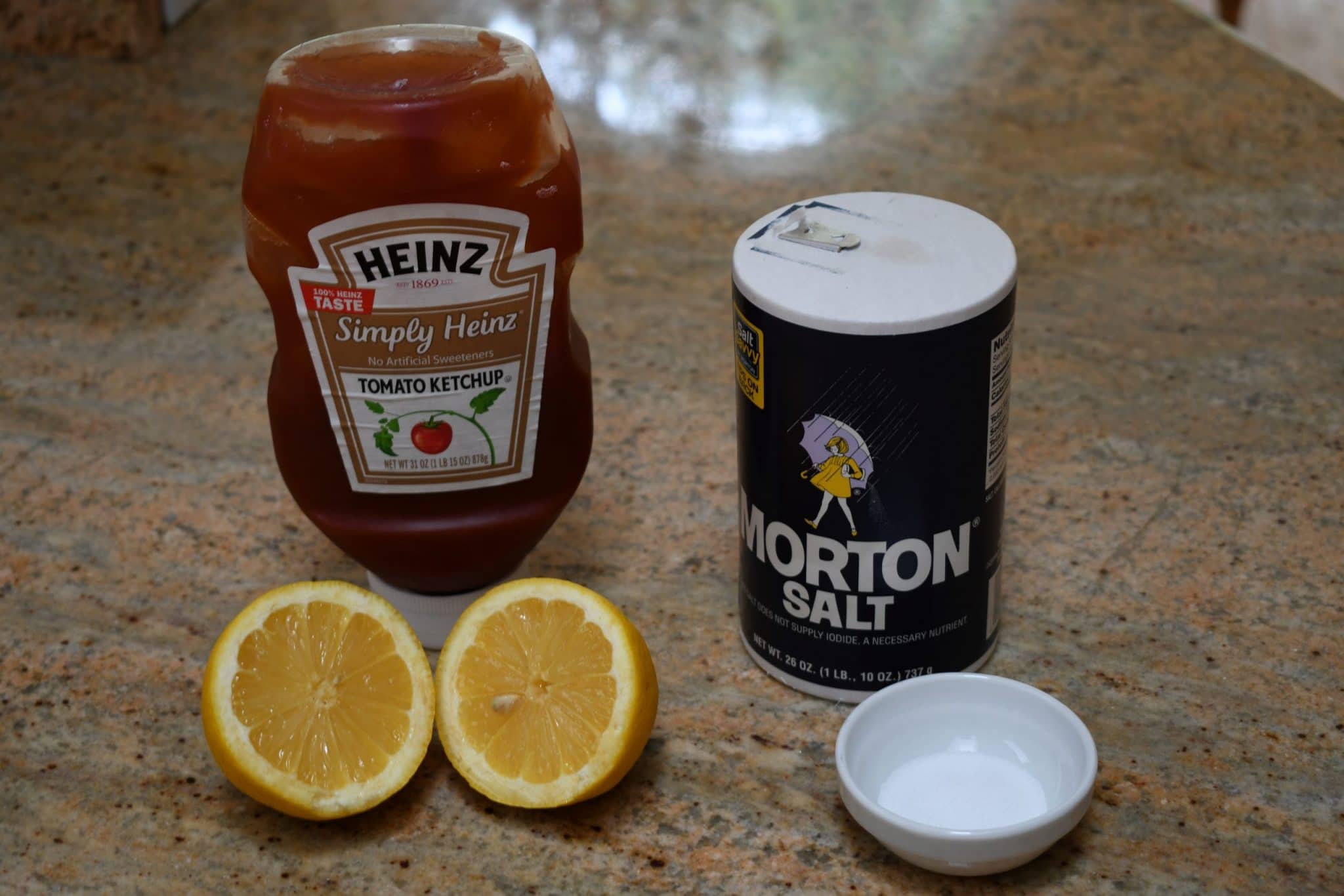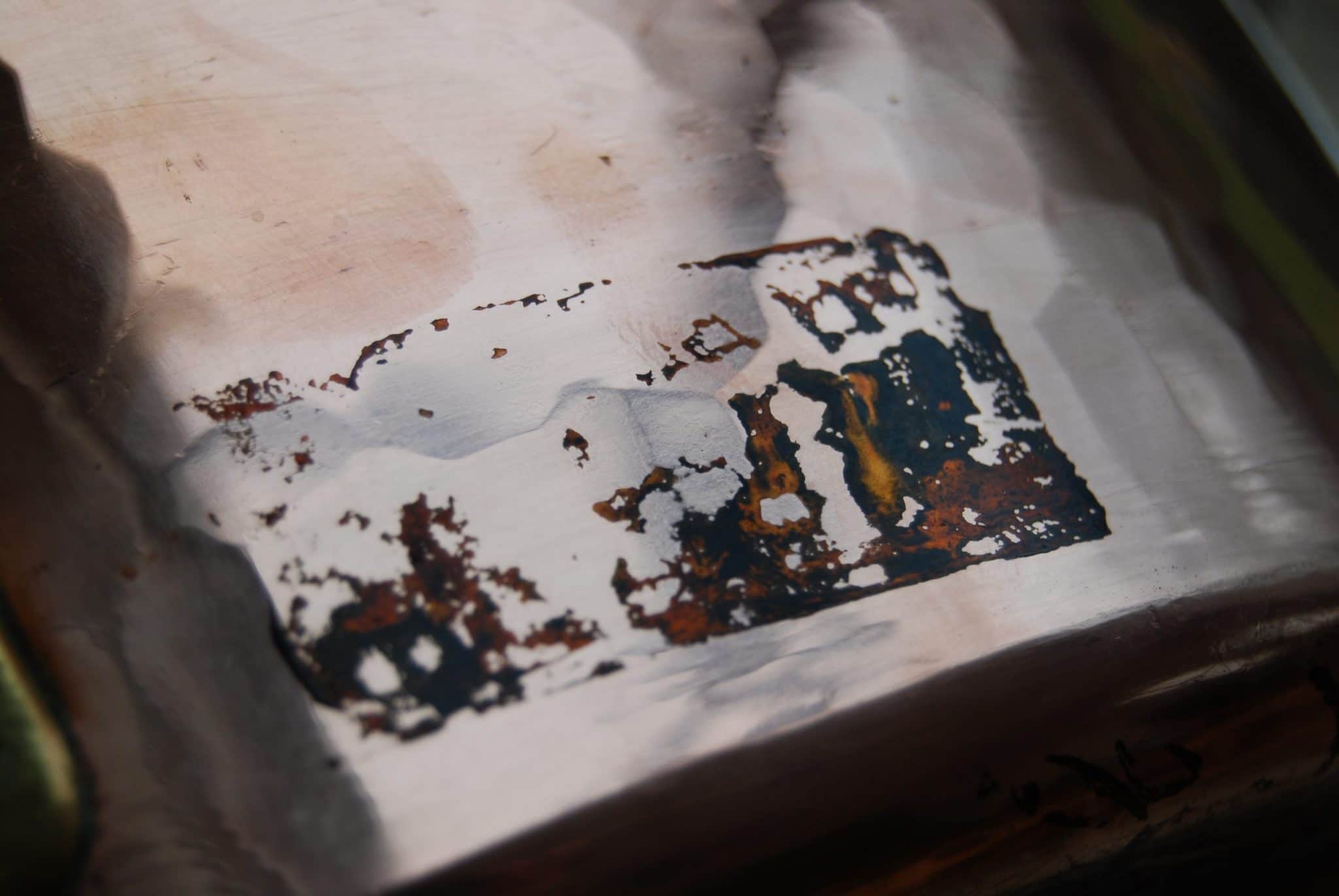If you’re going to own and use vintage tinned copper, you need to understand the value of baking soda in your cleaning arsenal.
One of the great rules of tinned (and silvered) copper cookware is DON’T SCRUB IT HARD. Tin and silver are soft metals that can be mechanically scraped away, leaving bare copper underneath. This isn’t fatal to the pan, of course, but when the area of exposed patches of copper add up to about a square inch (the size of the face of a US quarter coin), it’s time to reline the pan.
So where does this leave you if you have a really really dirty pan? Below is a silver-lined skillet that I used last night to make some delicious pork with a maple-chipotle glaze. All that sugar in the glaze carbonized into a thick scrub-resistant layer. I soaked it overnight and worked on it a bit this morning with a blue scrub sponge, but as you can see below, it hasn’t done much good.

If this were a stainless-steel pan, I’d break out the Bar Keeper’s Friend and go at it with some elbow grease. But with a silver lining only a few microns thick, I can’t do that.
So what’s the answer? Heat and chemistry — more specifically, sodium bicarbonate, what we in the US call baking soda.
Step One: Fill the pan with water and set it on the stove to boil.
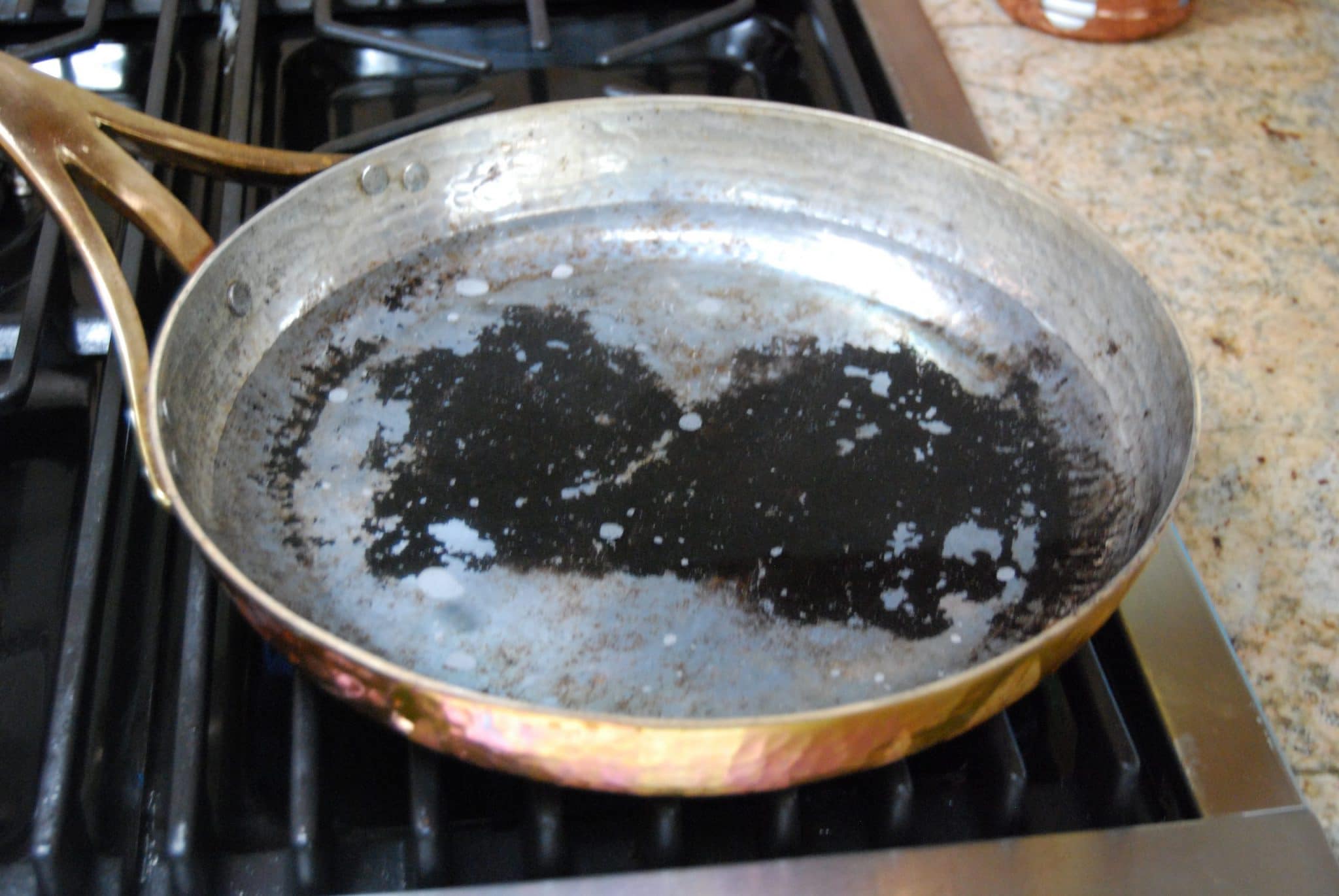
Step 2: As the water heats up, add a handful of baking soda, dribbled over the worst areas. The baking soda will react with the fatty acids in the food residue to produce fine bubbles. If you are anxious like I am, you can scrape gently across the carbonized areas with a wooden flat-edged tool, such as a spatula. Notice in the photo below how the black stuff is lifting off and floating to the surface? That’s good. Add more baking soda as needed if the bubbling subsides.

Step 3: Dump out the dirty water and survey the pan. Use a blue (“non-scratch”) scrub sponge with hot soapy water to work on the remaining areas. The carbonization will be softened by the reaction with baking soda and heat and will come away much more easily.

And here is a very clean pan! This is not a procedure I need to do every time the pan gets dirty — soaking and gentle persistent scrubbing work wonders on tin and silver, and only in extreme cases would I feel motivated to go at it like this.

In case you’re wondering what I mean by “green” vs “blue” scrub sponges, here’s what they look like in the US. They’re both considered “scrub sponges” but the blue one is designated “non-scratch,” and that’s the one you want.

Corrections
I initially had the chemistry wrong on this — I wrongly described baking soda as an acid, when of course it’s a base. The fizzing reaction that you see is indeed an acid reacting with a base, but it’s the food grease that’s the acidic part, and the baking soda that’s the base.
